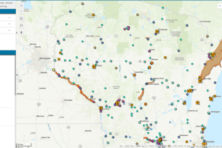New, Enforceable Standards Announced for PFAS
- Share
- Tweet
- Pin
- Share
The U.S. Environmental Protection Agency (EPA) released new, federal standards last week for an emerging drinking water contaminant – per- and polyfluoroalkyl substances (PFAS) in drinking water.
This includes a new enforceable Maximum Contaminant Level (MCL) of 4.0 parts per trillion (ppt) individually for PFOA and PFOS, and 10 ppt individually for PFNA, PFHxS and GenX.
The EPA’s enforceable standards acknowledge the importance of limiting exposure to PFAS in total, and the role that drinking contaminated water plays in the potential for negative health impacts from PFAS.
“Overall, Wisconsin’s public water systems are well positioned to comply with the EPA’s enforceable standards,” said Steve Elmore, Director of the Wisconsin Department of Natural Resources (DNR) Bureau of Drinking Water and Groundwater. “The DNR set enforceable standards for two types of PFAS in public drinking water in 2022. Over the last year, public water systems throughout Wisconsin have sampled at least once for these and other PFAS.”
The current enforceable standard of 70 ppt for PFOA and PFOS in public drinking water will remain in effect until the DNR completes rulemaking to comply with the EPA’s drinking water standards. This may take up to three years to complete based on Wisconsin’s statutory requirements.
Additionally, the DNR will formally request that the Wisconsin Department of Health Services (DHS) update their health-based recommendations for the six PFAS included in EPA’s finalized MCLs to account for new scientific findings. Wisconsin DHS anticipates their updated recommendations will be available during the second half of 2024.
“DHS is committed to protecting Wisconsinites from exposure to PFAS, including diligently reviewing the new scientific information available from EPA,” said Kirsten Johnson, DHS Secretary-Designee. “The good news is there are steps people can take right now to reduce their exposure to PFAS in drinking water and other sources.”
While this rulemaking process is underway, the DNR will also work with PFAS-impacted public water systems on potential actions to reduce contamination in water provided to the community.
Of Wisconsin’s nearly 2,000 public water systems, approximately 95% have PFAS levels below the EPA’s standards. Sampling results for municipal public drinking water systems are available to view in the PFAS Interactive Data Viewer.
PFAS are a group of human-made chemicals used for decades in numerous products, including non-stick cookware, fast food wrappers, stain-resistant sprays and certain types of firefighting foam.
These contaminants have made their way into the environment in a variety of ways, including spills of PFAS-containing materials, discharges of wastewater that contain PFAS from treatment plants and use of certain types of firefighting foams. PFAS are known to accumulate in fish and wildlife tissues as well as in the human body, posing several risks to human health. You can find more information about actions to take to reduce your exposure to PFAS at dhs.wisconsin.gov/chemical/pfas.htm.


